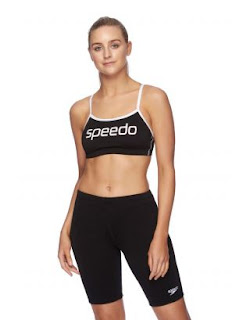Benefits of using wetsuits & thermals
Swimming in cold waters is just part of the sport. The trial, the tribulations of training at the pool; and it's all worth it. It's hard to imagine what life would be like without a wetsuit. A wetsuit can save you from some serious health issues when swimming in cold water or help provide more support when swimming in open water, but there are other benefits as well!
Wetsuits have been used for some time by freed divers, but over time they have found the benefits of using a wetsuit when diving in cold water. Triathlon wetsuits are designed to insulate, protect and comfort you.
The insulation part means that your core temperature is kept warm and you won't get as cold. The protection part means that your skin will not get irritated or cut by any sharp objects like shells or rocks. And then finally the comfort features enable you to keep swimming for longer without feeling uncomfortable.
Up until recently, triathlon wetsuits were generally not used by swimmers in open water events (with the exception of divers). Today, wetsuits are used by swimmers all over the world, from triathletes to open water swimmers. Studies have shown that in average races over a distance of 1,500m or longer, triathletes and open water swimmers that used a wetsuit finished approximately 30-40 seconds quicker than those who did not use a wetsuit. The benefits of using a wetsuit in cold open water are evident!
There are generally two types of wetsuits: the more traditional 'skin-tight' and the short neoprene 'diving-style' suits. If you wonder why there are two types of suits, it is all about where and how you will be swimming.
The skin-tight suits are usually made out of thicker material that does not allow for as much flexibility to the body whilst the diving style wetsuits have a lighter feel when worn but can get very bulky especially when wet. These latter suits are ideal for divers because they can provide better buoyancy control while wearing them in comparison to skin-tight suits. Also, 'diving-style' suits are preferred by Open Water Swimmers because they allow for more flexibility, ease of movement, and warmth to the body.
Some brands offer various styles of triathlon wetsuits and these need to be considered. Some swimmers want a suit which is an all-in-one product that includes: long sleeves, long legs and a hood or balaclava. These suits are often made out of a thinner material compared to a skinsuit but still offer the same insulating qualities that you would expect from a wetsuit.
Swimming Fins make a huge difference in speed and endurance when swimming. Fins allow the swimmers' bodies to be more streamlined. It is also difficult to swim fast without fins; so it is advised not to try and swim fast on your first few training sessions.
There are three different types of fins: Open Heel (Ankle), Toe Paddle, and Plunge (Full Foot).
The Ankle fins are the least efficient. They can provide a little more propulsion than just using your arm, while still keeping your feet in front of you for kicking. They are cost-effective, easy to use and can be used for both front crawl or breaststroke kick sets. The Toe Paddle fins are the most efficient. They provide the greatest propulsion and allow for a fast pair of kicks which can improve sustained swim speed. They are also very comfortable to wear and they stop when you want them to stop, meaningless finning.
However, they can become uncomfortable after long periods of swimming and they are not as easy to use as Ankle fins. The Plunge Fins are similar to Toe Paddle fins but it differs in that it is more like using a 2-finned paddling set up. Many swimmers find this suits best for the freestyle stroke setup because it is more 'natural' (the same way that many swimmers would swim if they had a kayak).
Goggles are worn to protect the eyes from water and to improve swimmers' vision. But it is important to choose the right pair of goggles for you. There are a few things to consider when choosing your goggles:
The goggles fit is paramount, as most swimmers will only use them a few times per week, therefore they need to be comfortable enough for this purpose.
The material of the lens is an important factor in selecting the right goggle. Manufacturers provide different types of lenses such as anti-fog, UV protection and Mirror.
These are particularly important for people who have a tendency to get water into their eyes when swimming. Swim goggles are very useful for open water swimmers as they provide a layer of protection from the water and help to keep your eyes safe. They can also be used as a great tool to support your vision, which can come in useful especially when swimming in cold weather.
Bottom Line
There are many brands of wetsuits, triathlon suits, and accessories on the market today and it can be difficult to choose the best one for you. The challenge is that there isn't one perfect product for every type of swimmer; instead, it is about choosing the right product for your needs and budget.
For more information, visit https://www.swimwearshack.com.au/
Original Source: https://bit.ly/3z9hFef




Comments
Post a Comment